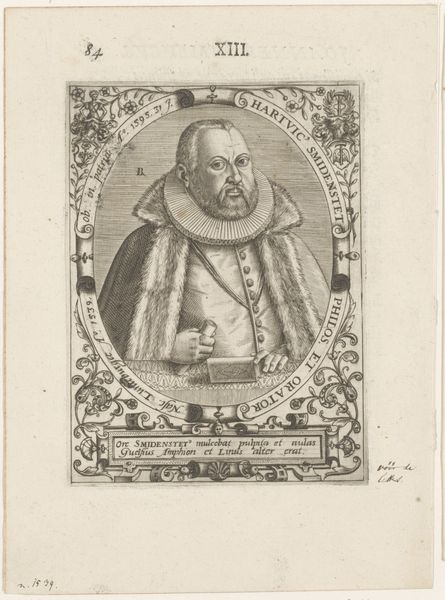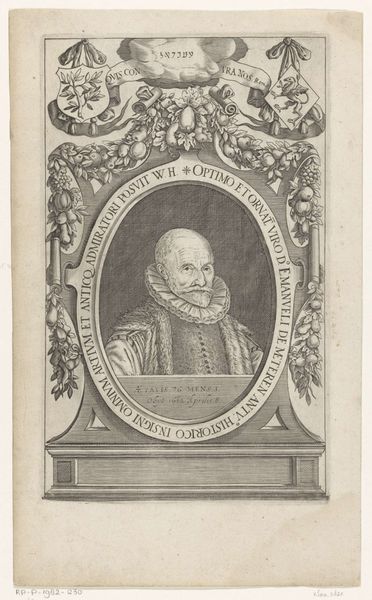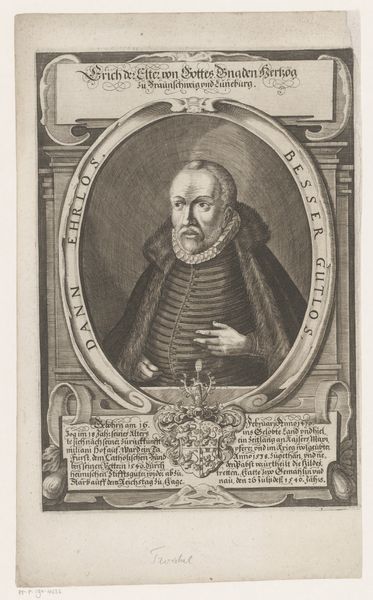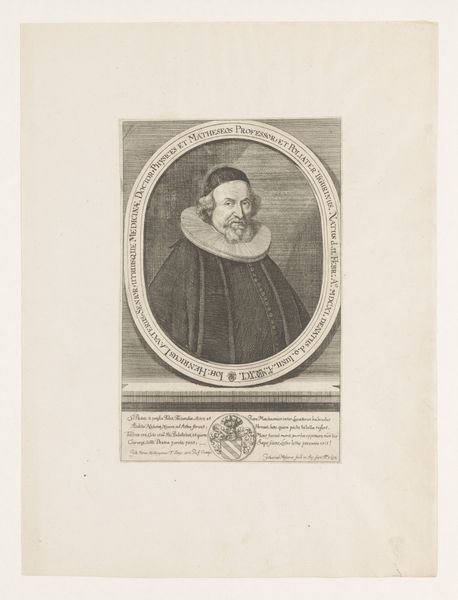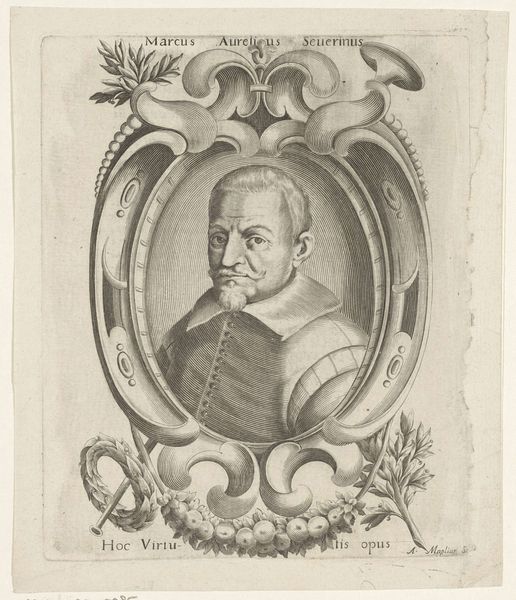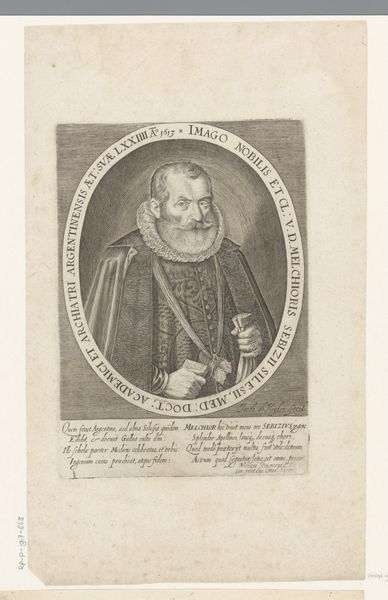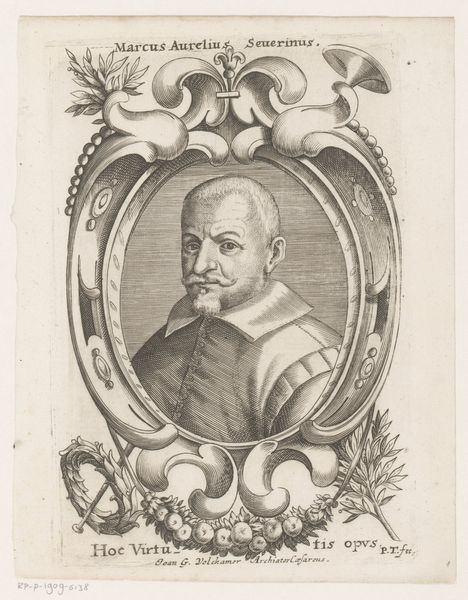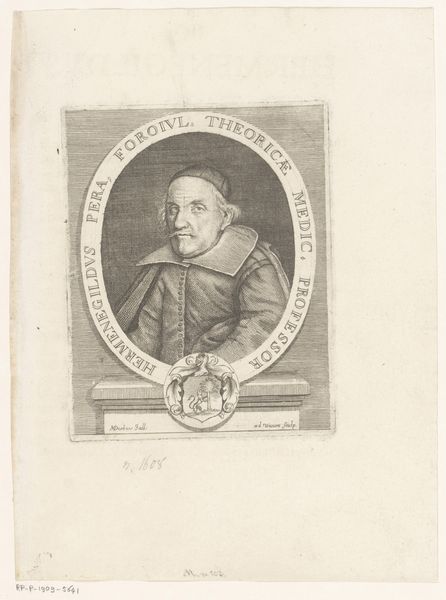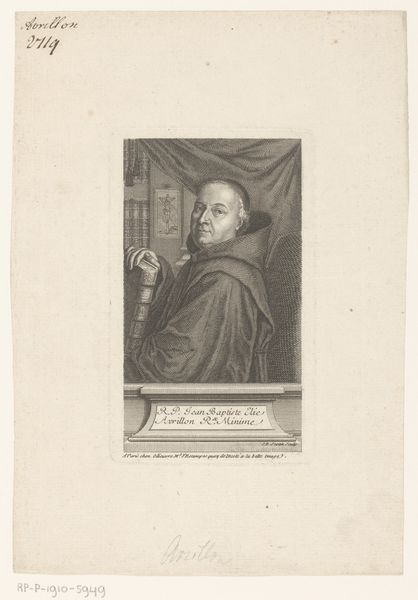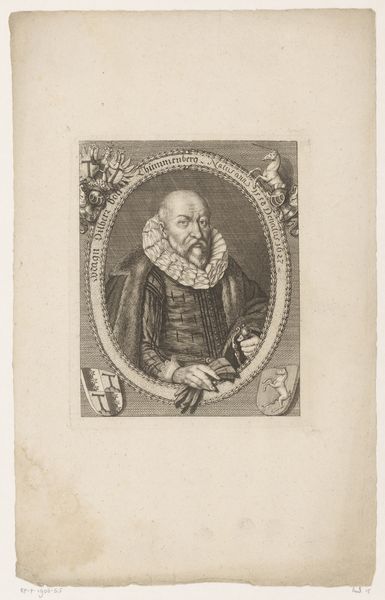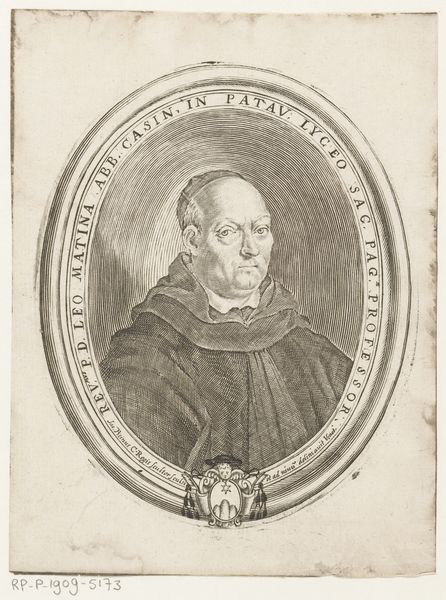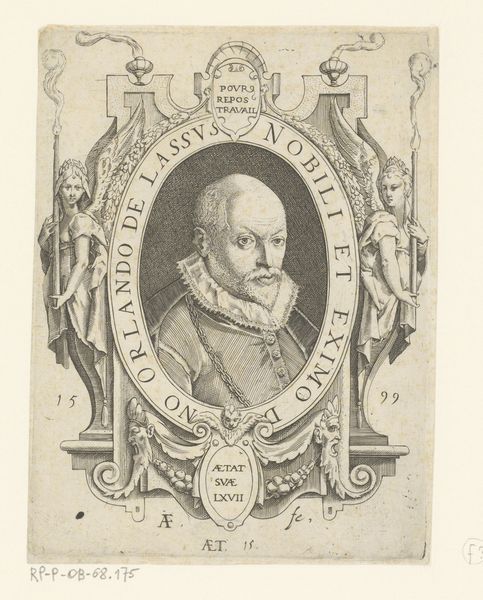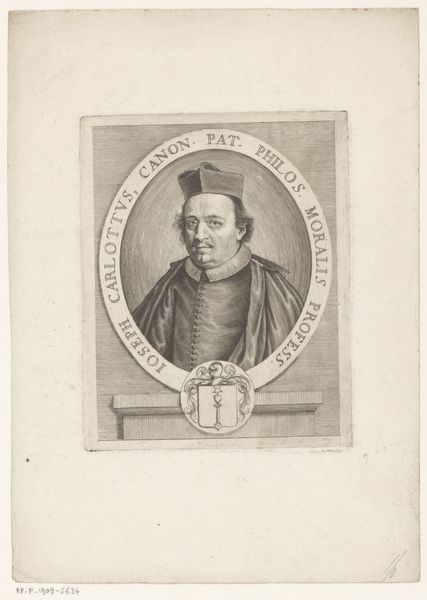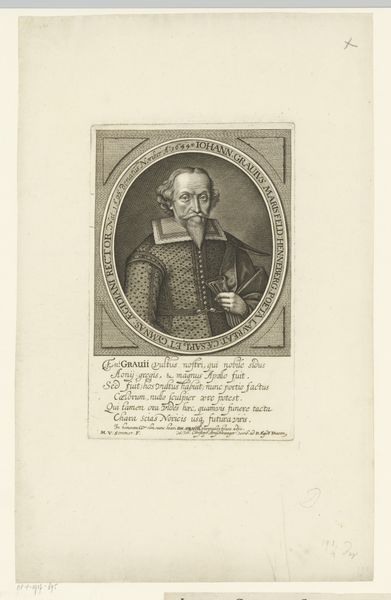
Portret van George Frederick, Markgraf von Brandenburg-Ansbach 1582 - 1671
0:00
0:00
print, engraving
#
portrait
#
baroque
# print
#
figuration
#
history-painting
#
engraving
Dimensions: height 153 mm, width 113 mm
Copyright: Rijks Museum: Open Domain
Curator: Looking at this engraving, it evokes a real sense of authority. What do you see first? Editor: Definitely the ornate armor and the somewhat stern expression. There’s an almost overwhelming sense of hierarchy, of someone deeply embedded in a rigid social structure. Who exactly is depicted here? Curator: We're viewing a portrait of George Frederick, Margrave of Brandenburg-Ansbach. The piece, currently held in the Rijksmuseum, is a print from the Baroque era, dating from 1582-1671. It comes from the hand of Heinrich Ulrich. Editor: Ulrich clearly understood the power of the print, especially its capacity to broadcast imagery far and wide. The Baroque, of course, excelled at displays of power and grandeur. Note the frame within a frame, with all that self-important text crammed in. It certainly isn’t subtle! Curator: No, Baroque art seldom is! Prints like these played a crucial role in shaping the image and solidifying the legitimacy of rulers. Circulated widely, this image amplified the subject's prestige. It becomes part of the complex matrix of representation and political control. Editor: I wonder, looking at him—his garb and his face—what he actually felt about this carefully constructed persona. It's fascinating to consider what was left out, what had to be hidden, for this version of George Frederick to be circulated. Was he an eager participant? Or a reluctant subject? Curator: An intriguing question, given the limited agency most people had in those portrayals. These engravings highlight not just individual likenesses, but systems of power, societal values, and the mechanisms through which status was broadcast and reinforced. Editor: The details, like the heavy drapery and meticulously rendered armor, invite closer study of the culture that produced it, and to consider how historical narratives get selectively built and distributed. Curator: Precisely. These details act as critical historical artifacts and underscore the interplay between art and society, shaping our understanding of leadership and historical context. Editor: So much more to discover here, when we look past the imposing figure! Curator: Yes, indeed; now on to the next artwork.
Comments
No comments
Be the first to comment and join the conversation on the ultimate creative platform.
